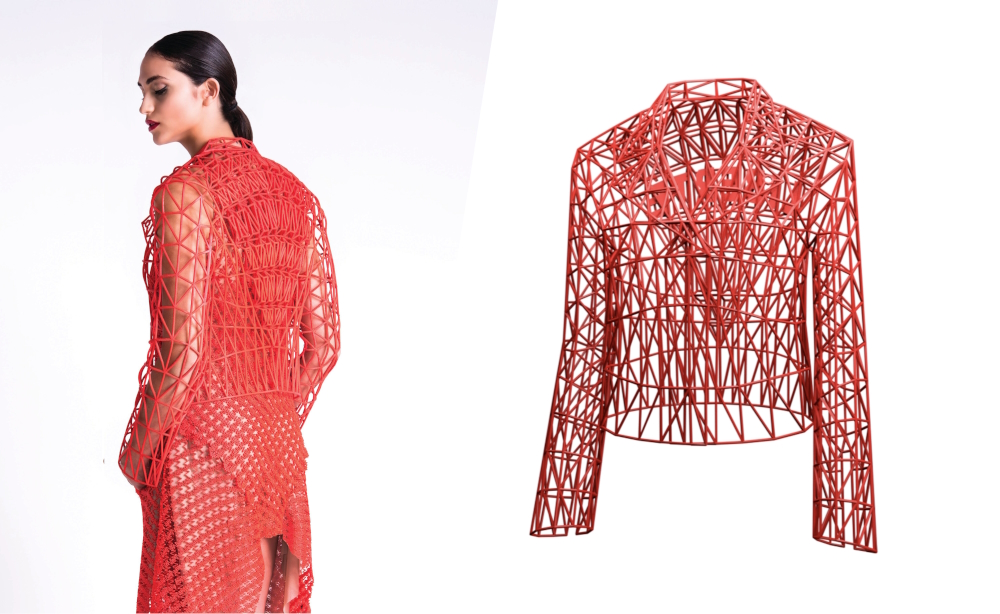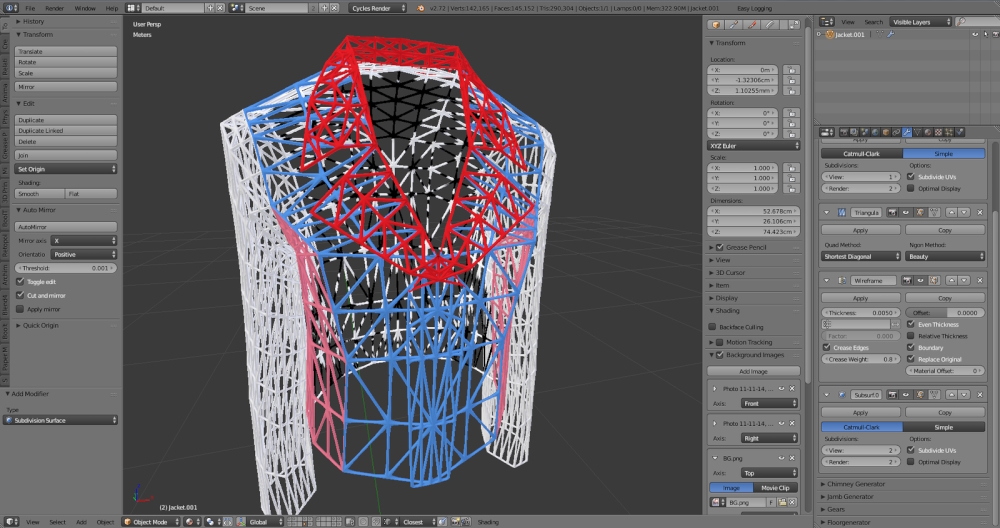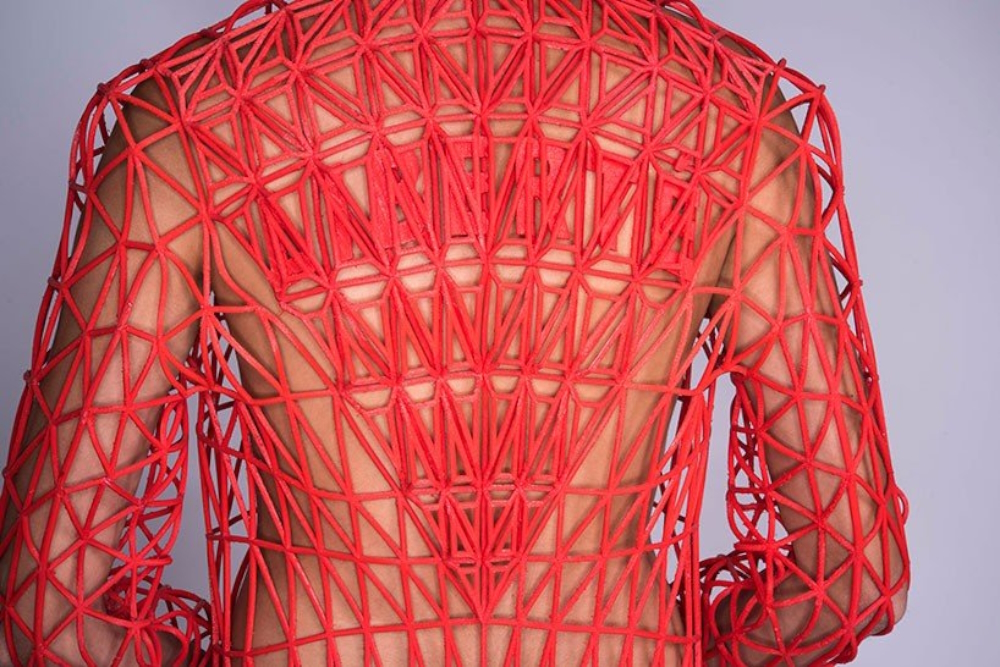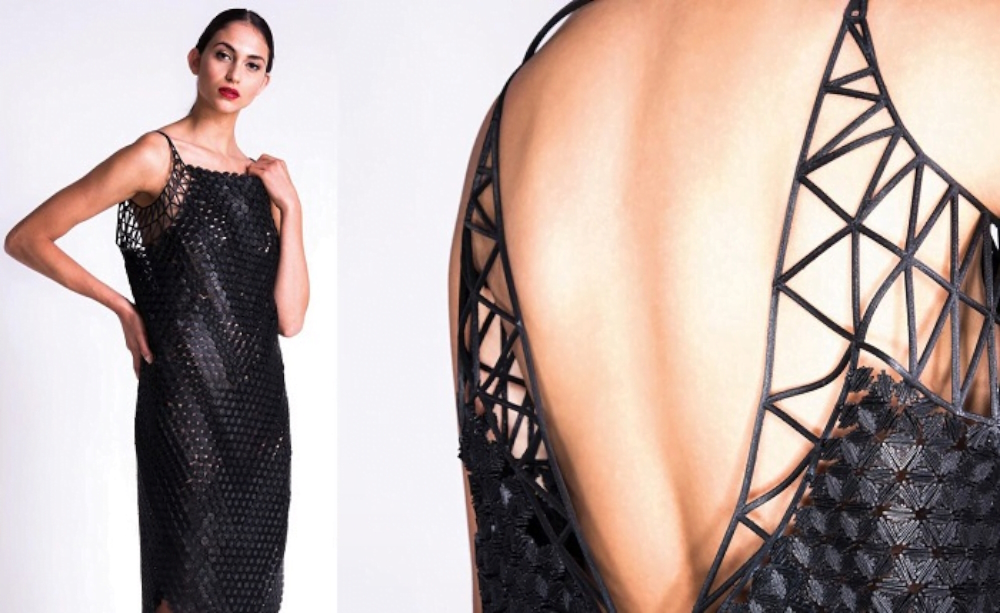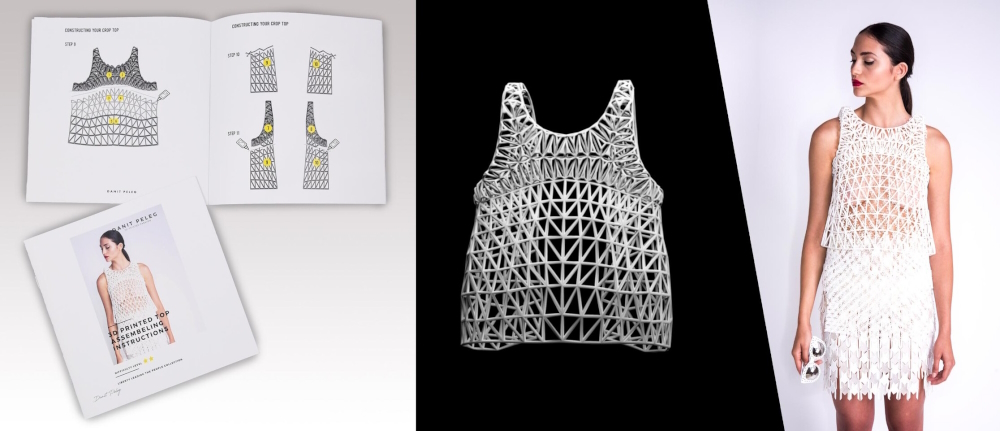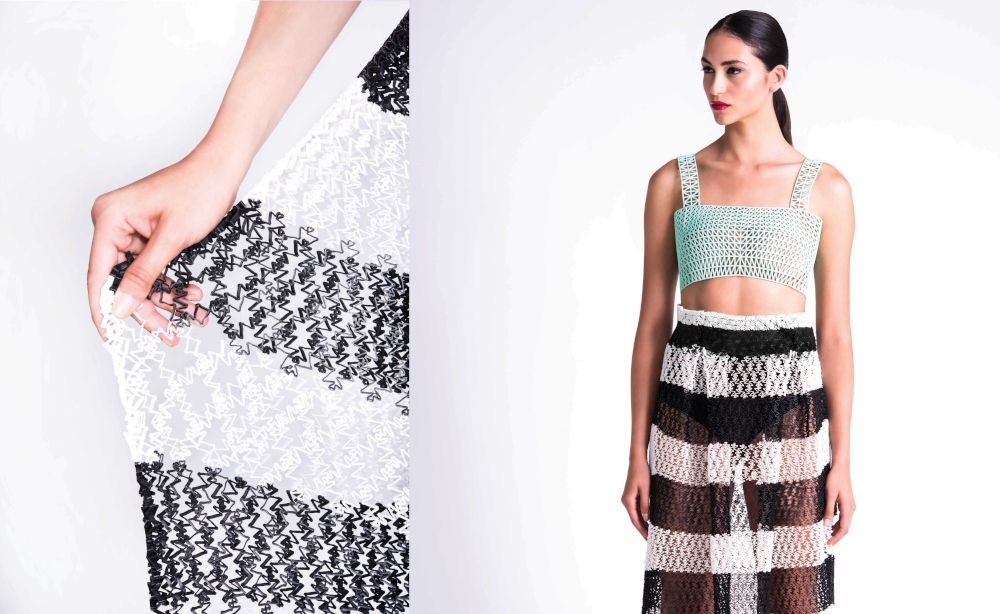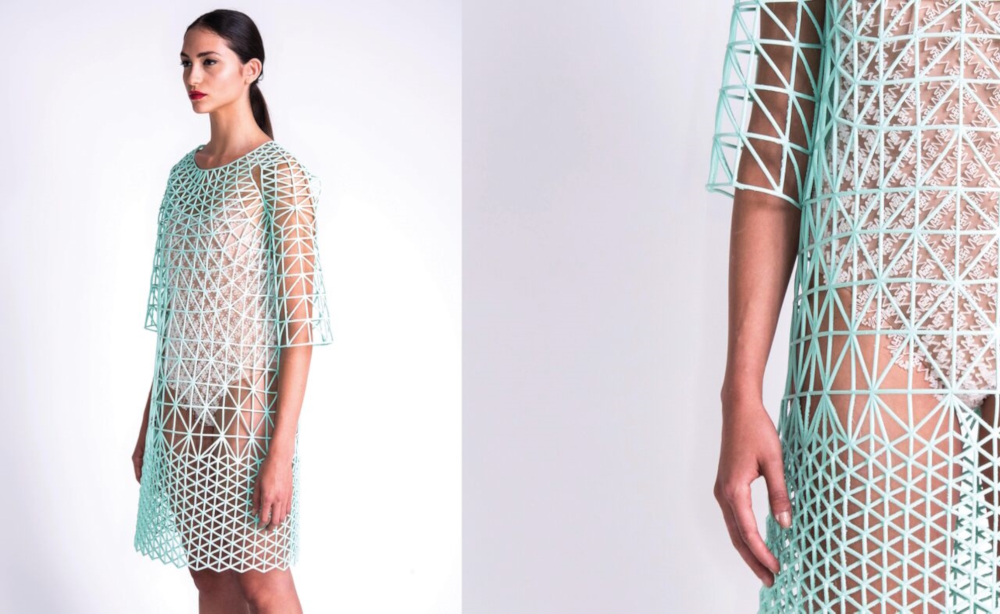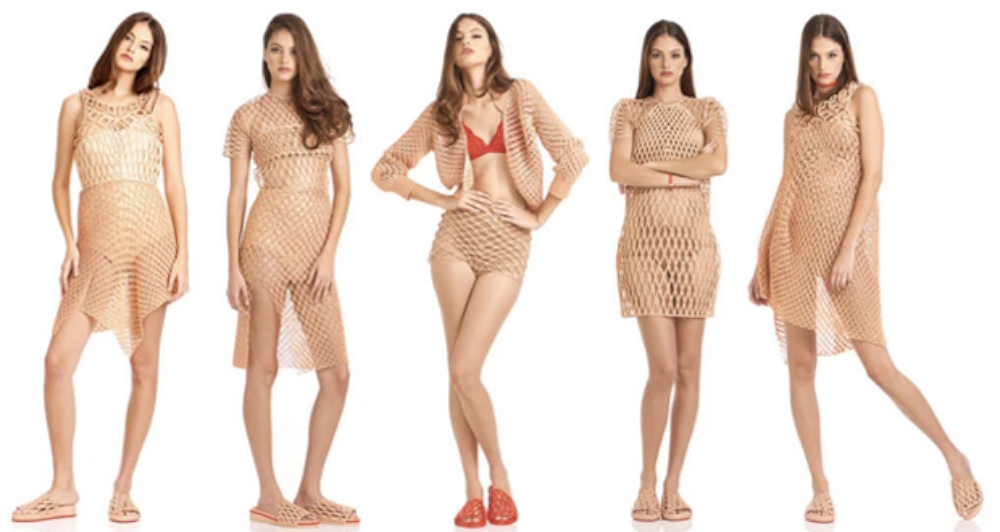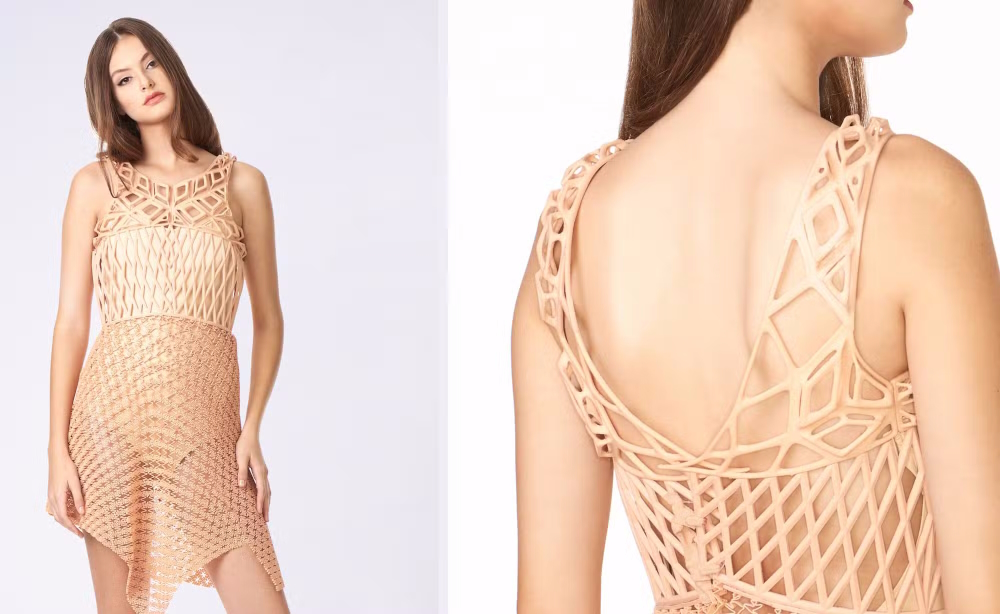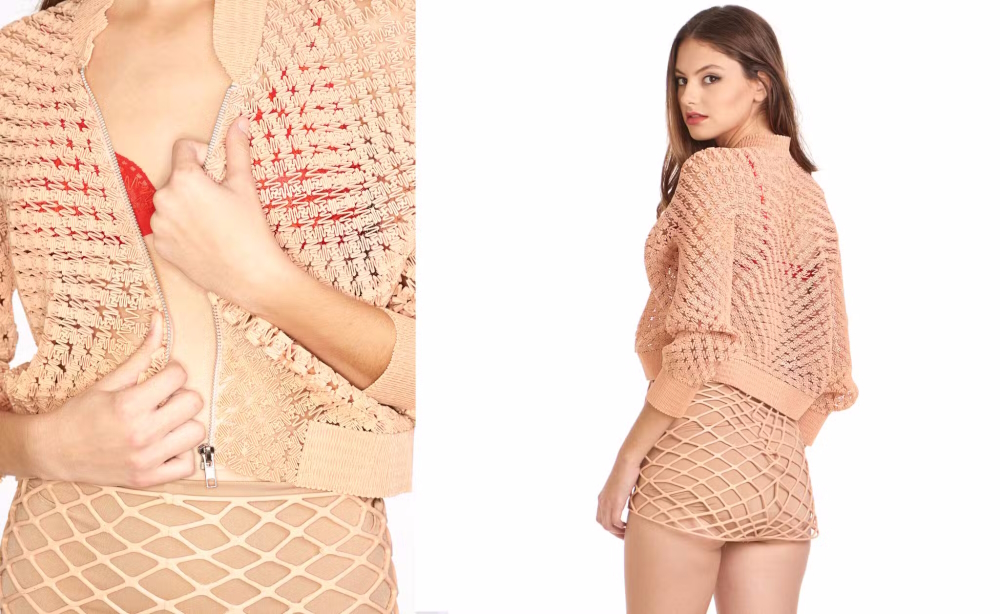Danit Peleg
awarded, innovative 3D printed fashion designer
Israel / Portugal
The first commercially available clothing collection, self-designed and afterwards produced on a desktop 3D-printer at home! That innovation received global attention in The New York Times, The Wall Street Journal, The Guardian, The Washington Post, Elle, Vogue – to name just a few. In addition it brought the creator many accolades like being part of Art Directors Club’s renowned „Young Guns“, „Europe’s Top 50 Women in Tech“ (Forbes) or „100 most inspiring and influential women from around the world“ (BBC). Since then this Israelean substantiated her reputation for pioneering the fashion and tech world by taking further steps forward. So she has offered the first 3D-printable fashion NFTs (= unique digital assets that allow the owner to print its own garment). Noteworthy is the fact that the basic inspiration for the entire futuristic work of „one of the world’s most influential conceptual fashion designer“ (toolset.com) originates from the early 19th century!
Danit Peleg
awarded, innovative 3D printed fashion designer
Israel / Portugal
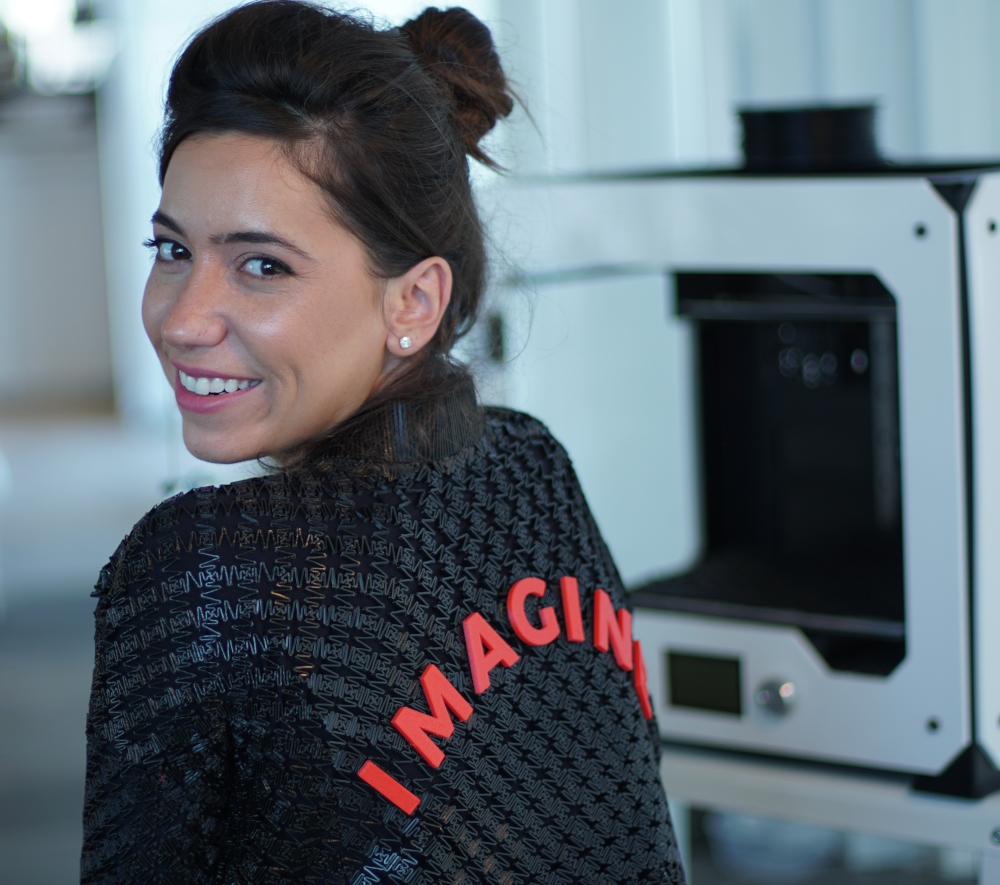
Back into the future! That’s not only the title of a famous science fiction comedy, but the way it went for Danit Peleg (* 1989 in Tel Aviv, Israel) too. She was inspired by Eugène Delacroix‘s popular painting „Liberty Leading the People“. On the canvas (exhibited in the Louvre, Paris) the Frenchman „is commemorating the July Revolution of 1830 that toppled King Charles X. A bare-breasted woman of the people with a Phyrgian cap personifying the concept and Goddess of Liberty leads a varied group of people forward over a barricade and the bodies of the fallen, holding aloft the flag of the French Revolution [...] in one hand and brandishing a bayonetted musket with the other“ (Wikipedia). While the figure of Liberty is the symbol for a shift of one constitutional monarchy to another, Danit Peleg set out to „revolutionize fashion design and manufacturing processes“ (globalfemaleleaders.com). „My goal was to create a ready-to-wear collection printed entirely at home using printers that anyone can get“, she’s quoted on nocamels.com.
Every beginning is difficult of course. That saying became true for this creative while studying Fashion Design at the Shenkar College of Engineering, Design and Art in the Tel Aviv District. Despite being somebody, „who taught herself 3D modeling and printing pretty much from scratch“ (voxelmatters.com), she worked on a dissertation researching the possibility of 3D-printing clothes. 3D printing is a method that allows you to create physical 3D objects of complex structures, based on a digital model.
In 2014 Danit Peleg designed her first jacket that way for the graduation - a red piece entitled „Liberté“ (in reference to Delacroix‘s painting). A lot of experimentation with different materials and setups was necessary to gain a satisfying result. It took 400 hours to materialize! After nine months the five pieces of the entire collection for her final unversity project were completed. It demanded 2.000 hours to be printed. When its images went viral it caused an international buzz. Subsequently her garments have been showcased in different events, museums and exhibitions around the world.
After graduation in 2015 Danit Peleg startet her own studio via which she provides custom 3D printed designs for clients like Amy Purdy. The American actress, model, para-snowboarder, motivational speaker, clothing designer and author wore a Peleg-dress during a dance performance at the opening ceremony of the Paralympic Games 2016 in Rio de Janeiro.
Her second ready-to-wear woman’s collection was called “The Birth of Venus”. It included the “world’s very first 3D printed garment available for purchase online – a 3DP bomber jacket” (globalfemaleleaders.com). It was limited to 1.500 customized pieces at a price of $ 1.500 each.
Besides designing, undertaking training herself and experimenting, Danit Peleg is in high demand as a public speaker on the topics “future of fashion” and “how to create 3D fashion”. For sharing her knowledge she even hosts online workshops for a very limited number of beginners.
As 3D printers and filaments (created by plastic polymers that can easily be recycled) continue to evolve rapidly, so do Danit Peleg’s imaginations, visions and plans. The latest personal step is her offering three pieces from her first 3D printed collection as the first 3D-printable fashion NFTs. Who purchases such Non-Fungible Tokens owns the exclusive rights to a digital version of a garment along with its printable twin.
“Just imagine the potential“, Danit Peleg raved on nocamels.com. „If you’re cold, print your own jacket. Traveling with no luggage? Just print your clothes in the hotel room. Will we soon be able to design, share and print our own clothes directly from home?” And these are not all advantages. “If the technology does improve significantly the benefits will be huge — less shipping costs, more personalization, democratization of design. But, most importantly, there will be an alternative for more sustainable materials that you can recycle right after“, the Israelean stated on globalfemaleleaders.com. „I do believe 3D printing is revolutionizing many industries right now – specifically to fashion. [...] Designers can print to measure which allows for zero-waste – something incredibly revolutionary as a major issue in the apparel industry is the high percentage of waste (both in raw fabrics and final products). This also means not having to hold any inventory since everything is made to measure and downloadable.“
Danit Peleg is based in Lisbon, Portugal.
Interview April 2024
The future of fashion: designs printed at home and ready-to-wear
INTUITION/IMAGINATION
?: How does intuition present itself to you – in form of a suspicious impression, a spontaneous visualisation or whatever - maybe in dreams?
I believe my intuition is my superpower. I use my intuition in every single moment of my day, often in my work. It comes as a visualisation before and during the design process.
?: How do you come up with good or extraordinary ideas?
My ideas frequently evolve from past experiences I experienced in my life. Everything is related to each other. Sometimes it’s a small seed of inspiration. This initial thought or experience, that inspired me or a memory or a feeling is then developed into my ideas.
?: What if there is a deadline, but no intuition? Does the first fuel the latter maybe?
Deadlines often fuel my creativity by imposing a sense of urgency, forcing me to harness intuition and then translate these into ideas for a tangible designs or solutions.
INSPIRATION
?: What inspires you and how do you stimulate this special form of imaginativeness?
My inspiration comes from a desire to solve problems and push boundaries. In the previous nine years my focus has been on innovating within the fashion industry through 3D printing. But engaging with technological solutions and experimenting with unconventional materials always stimulated my creativity and curiosity.
?: How do you filter between ideas that are worthwhile pursuing and bad ones that you just let go of?
This is a big quotation, but if we talk about my ideas around my work in 3D printed fashion: the Ideas that usually stick are those that I can assume that never been tested before, and those which have the potential to be the first of a kind. Then I care about sustainability, uniqueness, and practical application that can improve my industry. Ideas that not aligning with these criterias I usually let go.
?: Does an idea need to appeal to you primarily or is its commercial potential an essential factor?
I’m lucky to have had a career since the day I graduated from fashion school that allows me to be creative and innovate without worrying too much about the commercial viability of my ideas.
CREATIVITY
?: What time or environment best suits your creative work process — for example, a time and place of tranquility or of pressure? Which path do you take from theory or idea to creation?
Right now is the perfect example it's 11:30 PM and I'm extremely focused while answering your interesting questions. During the day, I'm always busy, mainly because I'm too distracted to fully concentrate on creative thinking or crafting things. I thrive in calm environments where I can focus deeply without any distractions, so nights are the best time for me. I’m working from my studio, which now based in Lisbon, and I love it.
?: What’s better in the realization process — for example, speed and forcing creativity by grasping the magic of the moment or a slow, ripening process for implementation and elaboration?
A slow, ripening process to start with, followed by milestones leading up to the final date usually works best. Often, it’s for a special event that I want to attend with my work. In my research & development (r&d) projects, it involves collaboration and exchanging ideas with interesting people who inspire me to explore materials and techniques. This ensures that my solutions are not only theoretically sound and visually appealing but also functional and realistic.
?: How important are self-doubt and criticism by others during such a process?
Both criticism and constructive criticism are very much appreciated. They push my work to higher standards and help me think about my next projects. Although it can be disappointing when people tell me that my vision of commercially available 3D printed textiles will never come to realization in this lifetime But these feedbacks motivate me to invest even more time in my r&d projects and trust my Intuition.
?: Is it better to be creative on your own, to trust only your own instincts, or to work in a team?
Collaborations can be incredibly enjoyable for me. They bring different perspectives into the process, which I find valuable. That being said, I love crafting and developing my creative projects alone. However, when it comes to production, I love having extra hands.
?: In case of a creative block or, worse, a real failure, how do you get out of such a hole?
First of all, I don’t consider anything to be a failure, it's just one tiny event that is part of my journey. I don’t stay attached to my successes or my failures. In general I just continue to do what makes me curious and makes me feel good. And for creative blocks, I find that exploring new technologies and materials can help me with fresh inspiration.
SUCCESS
“Success is the ability to go from one failure to another with no loss of enthusiasm. " Do you agree with Winston Churchill's quote?"
Wow, my answer to your previous question is quite similar to this quote, even though I hadn't read it before. So, I guess my answer is absolutely yes. Each failure or success brings me closer to my future adventures.
?: Should or can you resist the temptation to recycle a ‘formula’ you're successful with?
All things are made out from constant evolution, so I don't view it as recycling a 'formula' or sticking to a successful moment. Instead, it's about evolving a similar idea, which always introduces something new to the process. This is what I think is the essence of innovation.
MY FAVORITE WORK:
„Liberté“-/"Liberty"-collection
One of my signature creations that best represents my work is the fashion collection I designed for my final project in fashion school. In this collection, I tried to solve a problem that I found that was with solving, within a very tight deadline.
I loved working with this 3DP technology because it allows me to 3D print anything I can imagine, and I LOVED pushing the boundaries to create something that had never been done before. This collection became the world's first fashion collection printed using desktop 3D Printers and kickstarted my amazing journey in this field.
